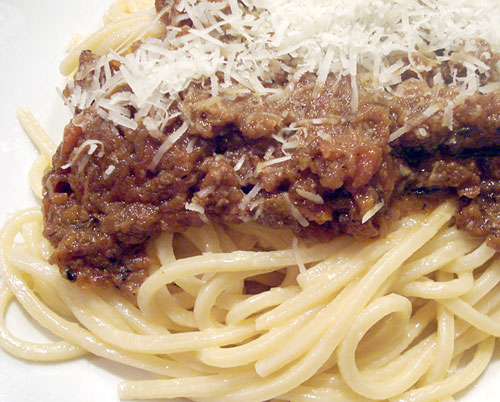
I love pasta in many guises, but when it comes to ultimate Comfort Pasta, there is nothing that compares to a spaghetti bolognese. By spaghetti bolognese, I mean spaghetti topped with a rich, ground-meat and tomato based sauce. No fancy ragu or such. I don't think it's that authentically Italian, but I don't really care. It's one of my favorite cool-weather dinners.
Once upon a time, I had what I thought was a perfect recipe for spaghetti bolognese. Then, about a year ago I lost my way. After a year of bewilderingly off-target bolognese, I've found my way back.
I blame Heston Blumenthal for messing with my head. (Disclaimer: I am otherwise a big fan of Mr. Blumenthal.) Last year, he tackled spaghetti bolognese on his In Search of Perfection television series (and in the book of course), and came up with a "perfect" version. The perfect Blumenthal version of spaghetti bolognese is, naturally, extremely complicated, but compared to the other "perfect" versions of various popular dishes it seemed to be the most doable. So, we (note the plural: it required a team effort) tackled it, piece by piece. It does help in life to have an almost equally food-obsessive partner for such quests.
It took us 3 full days to accomplish, starting from the pre-ordering of the meaty oxtails at the butcher counter (it's not a commonly used cut here), finding the perfect spaghetti, ripe tomatoes in December (yes, I know) and the final slow cooking of the sauce. And the result?
It was good, yes, but perfect? Neither of us was sure. But yet it had flashes of something great in there; the meatiness of the gelatinous oxtail, the unctuous richness. So, we embarked on a long journey of trying to tweak that recipe. We tried different meat combinations. (Turkey is a definite no.) We experimented with bacon, chorizo, various sausages, salami. We tried less or more of the vegetables, canned tomatoes alone or fresh alone.
All were interesting, but I still felt off kilter. Then, the other day I made bolognese more or the way I had made it for years until the Blumenthal experiments - and, it was just about perfect.
Mind you, it's probably because my criteria for a perfect bolognese are different from the great chef's, as I explain below. And some of the ideas gleaned from the Blumenthal version and the ensuing experiments did creep in, making the sauce even better. In any case, I'm now happy that this is my Perfect Spaghetti Bolognese. I can now move on to perfecting other things.
Filed under:
dinner winter sauce pasta favorites italian meat
Submitted by maki on 14 May, 2007 - 17:18
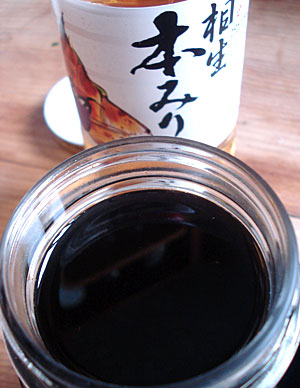
When the weather gets warmer, we eat a lot of cold Japanese noodles: soba (buckwheat noodles), hiyamugi (thin wheat noodles), so-men (even thinner wheat noodles), Sanuki udon (thick wheat noodles- Sanuki is the name of a region famous for udon) and harusame (bean or 'glass' noodles). For most cold noodle dishes a salty sweet soy sauce based soup or dipping sauce called mentsuyu is used. You can buy pre-made mentsuyu concentrate, but to me most of them taste too sweet or are overwhelmed by a too-strong MSG or similar artificial tasting umami flavor. Making mentsuyu at home from scratch is not so difficult, and the difference in taste is quite worth the little extra effort.
The base of mentsuyu is a mixture of soy sauce, sugar and mirin called kaeshi (or hon-gaeshi: hon means "real" or "authentic"). It can also be used as a flavoring base for many other things. You just need good quality dark soy sauce, white sugar, and good quality mirin. It keeps for months in the refrigerator, or even in the freezer (where it will stay liquid) so I like to make as big a batch as I can afford to price-wise and fridge-space-wise.
This is similar to the Japanese essence mix, but doesn't include the kombu seaweed or bonito. If you are a vegetarian you can use kaeshi safe in the knowledge that it's totally vegan, and combine it with a vegetarian stock. Kaeshi also lasts a lot longer since the basic ingredients are indefinite keepers.
I'll be talking about cold noodles and such in upcoming posts, so if you'd like to follow along, you may want to make some kaeshi to be ready.
This is a very traditional basic recipe.
Type:
recipe Filed under:
basics japanese sauce noodles
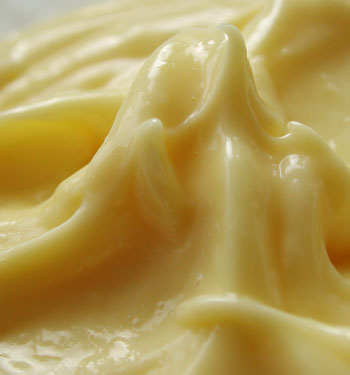
If there is one food that has defeated me over the years, it's mayonnaise. For the longest time I couldn't figure out how to make a good mayonnaise. I read the instructions in numerous cookbooks. I watched the Good Eats episode about it. I tried using a food processor, a stick blender, whipping by hand.
Filed under:
basics sauce
I have two articles on the back burner at the moment, and both of them use roux. Roux is a basic that every cook should know about, but for various reasons it's rather shrouded in myth.
Roux is basically a mixture of flour and oil, which are brought together to become a thickening agent for liquids. It is used for anything from gravy, stews, soups and various sauces. The most commonly used oil is butter, clarified or not.
Filed under:
basics sauce
I’ve got an amazing bottle in my refrigerator now. It’s filled with a mixture that forms the base for just about any sort of Japanese food. It takes all the drudgery out of making a clear soup, or a Japanese style stew, or the dipping sauce for noodles. I can’t live without it anymore.
Filed under:
basics japanese sauce
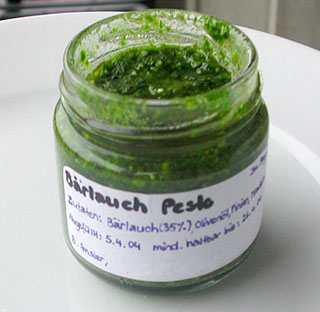
I've mentioned our local organic farm where we buy our eggs several times before. They also sometimes sell some locally produced food items. We spotted this wild garlic, or bärlauch pesto the other day and had to try it. (Ironically it turns out it's made by one of our neighbors who lives across the street.)
Filed under:
swiss spring sauce pasta
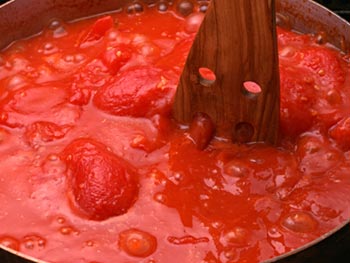
I've been posting some of the basic building blocks of Japanese cooking, and I thought I would add some other basics too. While I like to experiment with a new recipes sometimes, for everyday cooking this isn't too practical. So I rely on a few basic recipes that I have more or less memorized, and vary them to produce different results.
Filed under:
basics sauce favorites